Asustor AS6204T Braswell NAS Review
by Ganesh T S on November 5, 2015 8:00 AM ESTEncryption Support Evaluation
Consumers looking for encryption capabilities can opt to encrypt a iSCSI share with TrueCrypt or some in-built encryption mechanism in the client OS. However, if requirements dictate that the data must be shared across multiple users / computers, relying on encryption in the NAS is the best way to move forward. Most NAS vendors use the industry-standard 256-bit AES encryption algorithm. One approach is to encrypt only a particular shared folder while the other approach is to encrypt the full volume. Asustor supports folder-level encryption only.
On the hardware side, encryption support can be in the form of specialized hardware blocks in the SoC (common in ARM / PowerPC based NAS units). In x86-based systems, accelerated encryption support is dependent on whether the AES-NI instruction is available on the host CPU. As mentioned in the first section, one of the adantages of Braswell is the presence of AES-NI even in the Celeron SKUs. The N3150 does have AES-NI support, and we should not be seeing much penalty in the performance of the encrypted shared folders.
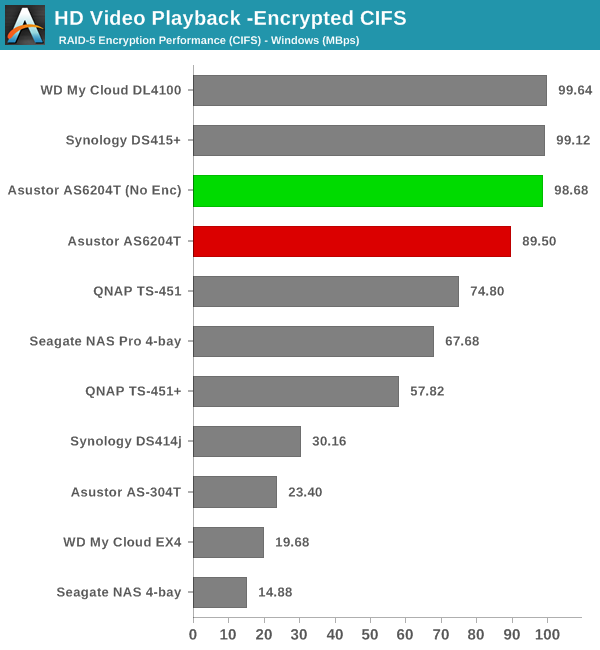
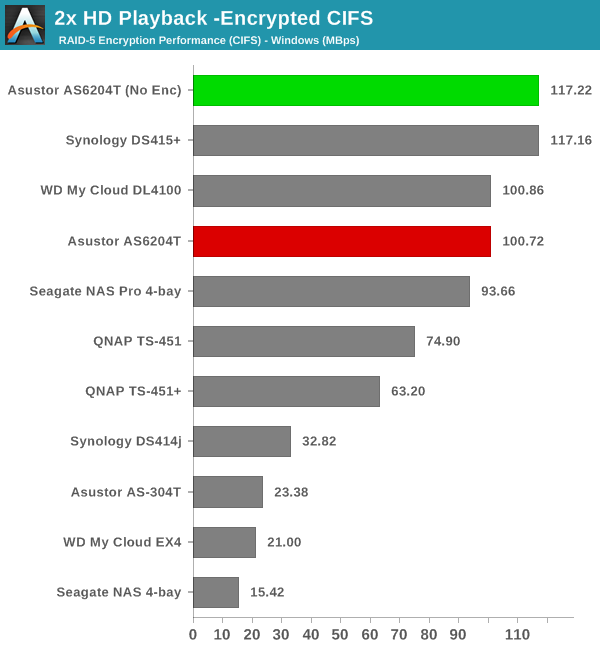
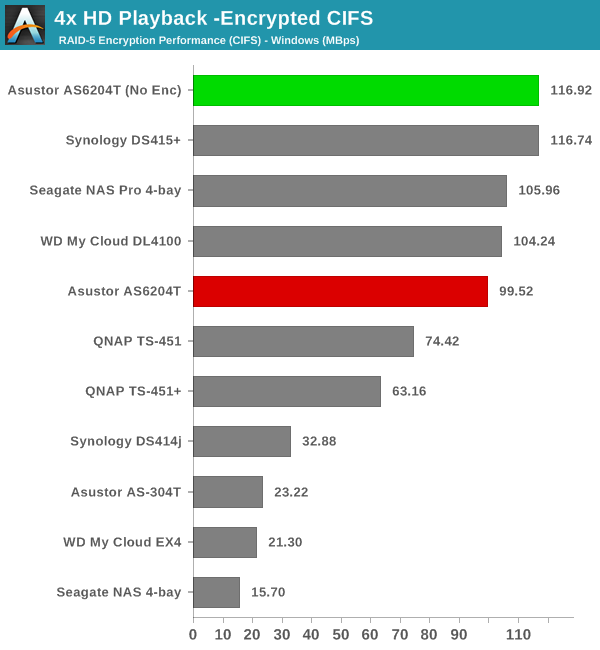
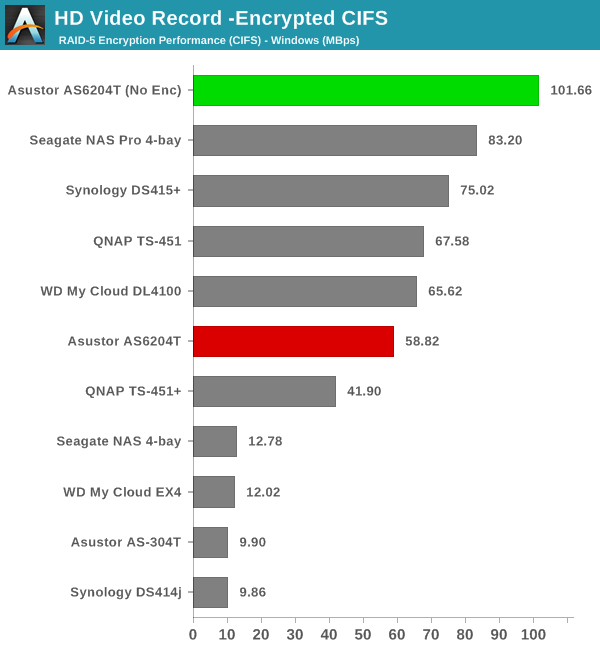
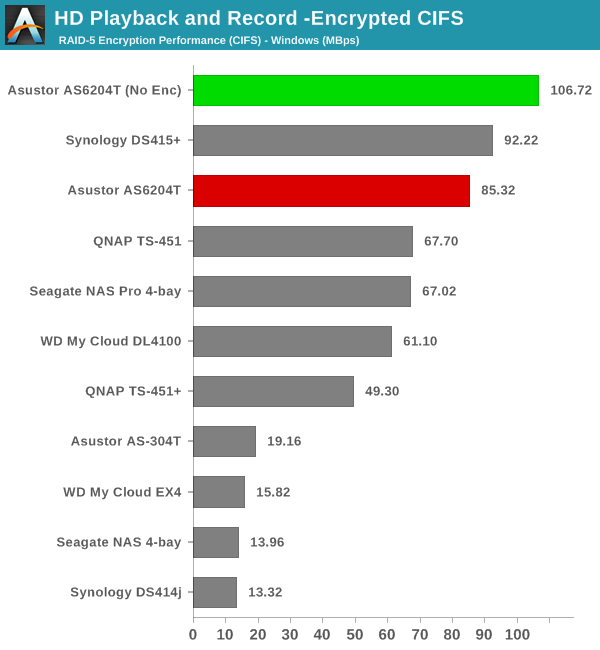
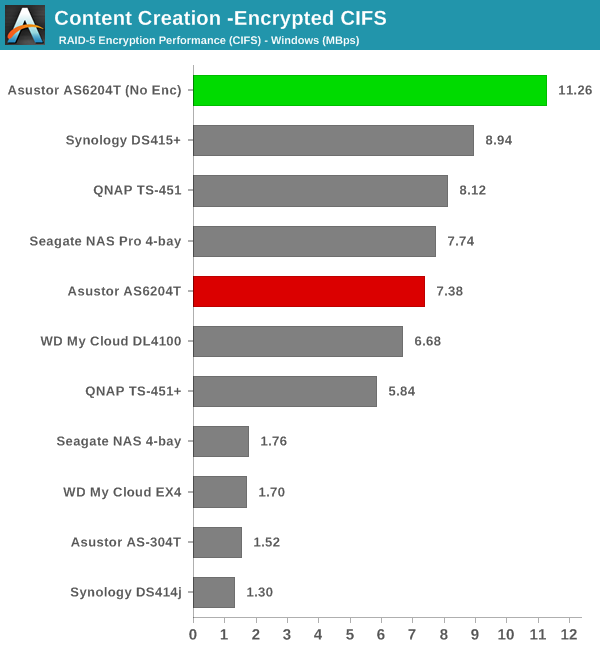
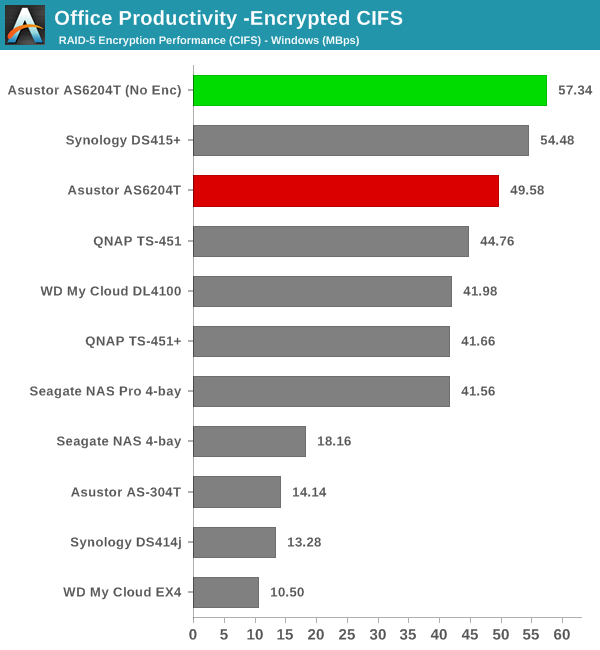
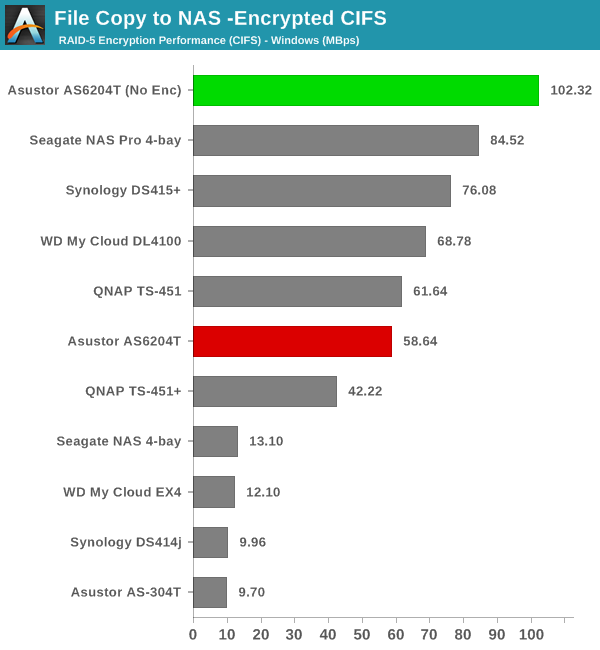

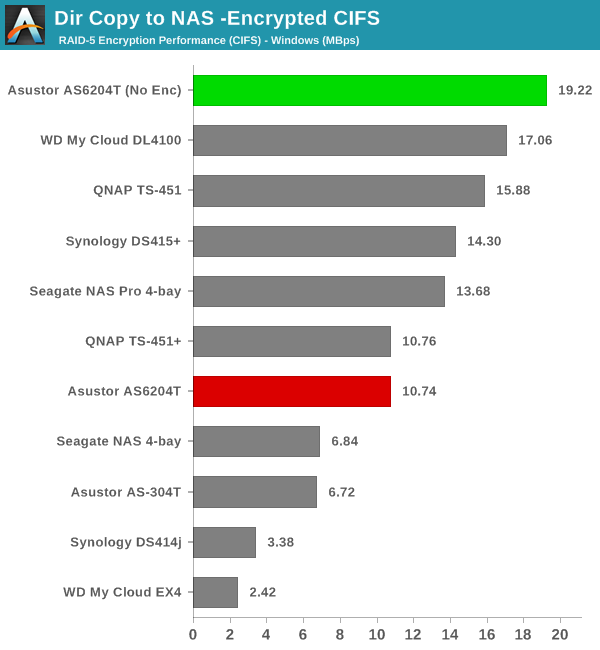
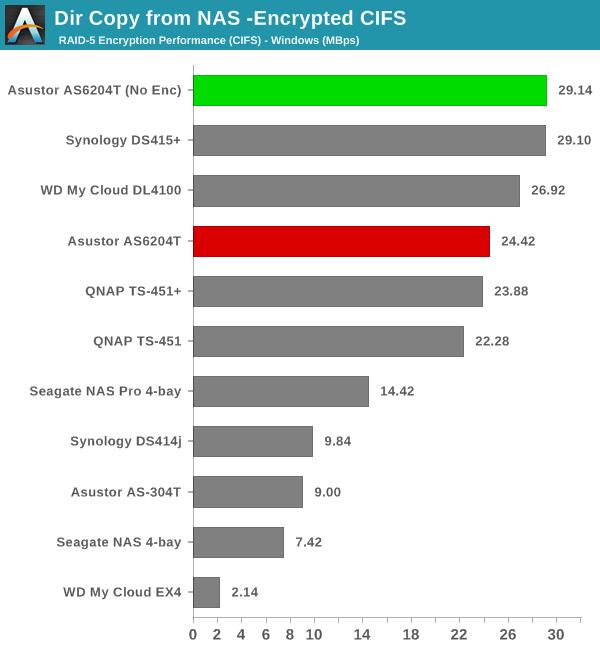
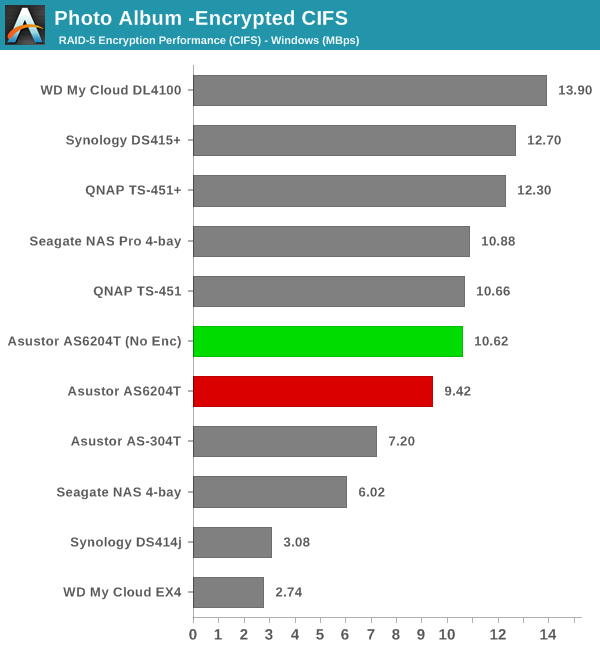
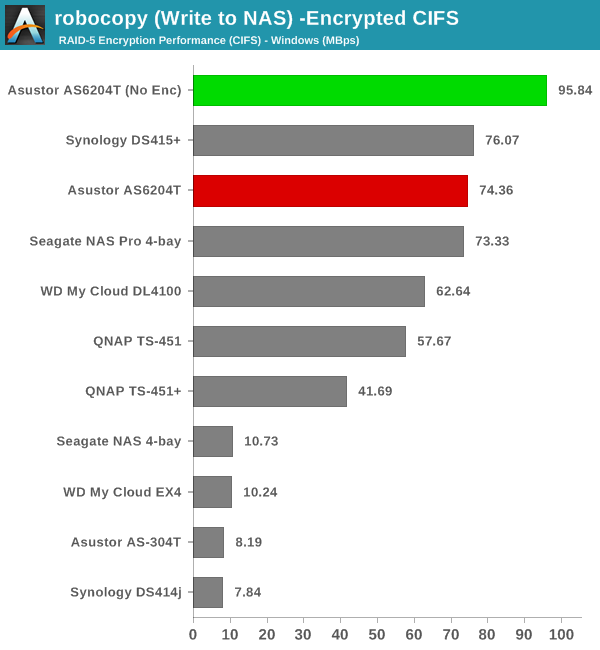
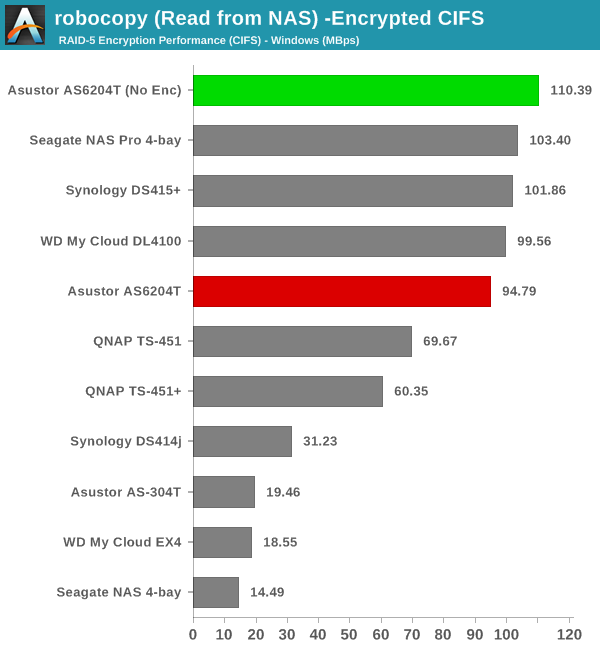
First off, the presence of AES-NI ensures that we don't have abysmal performance for any workload. Moving on to the performance penalties, we find performance loss to be in the order of 10 - 15% for read-intensive workloads to as much as 40 - 50% for write-intensive ones. Again, there is some scope for optimization in ADM for these scenarios.










29 Comments
View All Comments
extide - Thursday, November 5, 2015 - link
I think Purch could handle that expense. Anandtech isn't a little teensy website anymore, remember.DanNeely - Thursday, November 5, 2015 - link
Unless your preferred solution is either the Toms Hardware (picked on only because I'm not sure what else Purch already owns) comment system reskinned to Anandtech colors or something completely off the shelf like Discuss; that might not be the best idea. I'm very leery of handing the job off to a corporate overlord who bought the site on the assumption of being able to pull extra money out of it and which has already triggered multiple complaints from readers about overly intrusive advertising.milkod2001 - Thursday, November 5, 2015 - link
You could possibly contact Purch: http://purch.com/#contact-general(It own this website) and request it there. For such reputable company it is shame there is not edit option. It should not take more then 1 day to implemented it or just install DISQUS
Namisecond - Monday, December 7, 2015 - link
Don't underestimate the time it may take to transfer all the user accounts over. If the tools work fine and everything goes well in a single pass, it could take a day. If there are serious problems, might take several days to over a week.extide - Thursday, November 5, 2015 - link
Perhaps it refers to the number of dual-core modules -- as that is how Intel builds those chips (in dual-core pairs)dtgoodwin - Thursday, November 5, 2015 - link
Please, please, could you review a moderately configured FreeNAS setup testing it the same way you do these? I know there are a tremendous amount of variables, and tuning available, but if you used the standard configuration of software, and chose a medium performance platform such as an i3, or core series Pentium or Celeron and tested it with 4 drives, it could be comparable.I run a 7 drive RAIDZ2 with 3TB WD REDs. I am almost always able to saturate a single GB link using CIFS and robocopy or Windows file copy whether reading or writing. I'm running a less than optimal setup as I have 15 TB of usable space, but only 8GB of RAM. My system with a SuperMicro board with ICMP, 2 GB NICs, a Pentium G2030, and a used SuperMicro case cost me about $650 not including the drives.
Black Obsidian - Thursday, November 5, 2015 - link
I'm sure they could write such a feature, but the first 17 pages would be component selection, installation, lexicon (vdev, pool, stripe size, etc.), Shell Commands 101, and so forth.And none of it would say anything new. Anyone running--or considering running--FreeNAS knows its performance capabilities, and anybody seriously considering a Synology/QNAP/Asustor product is going to be in a coma by the third page of such a feature.
DanNeely - Thursday, November 5, 2015 - link
They wouldn't have to write those pages if they didn't want to. Just set general requirements and ask the hardware partners to donate a build as usual; or punt farther and get an entry level prebuilt freenas box from that company that's been selling them for years (albeit at a price that makes Synology/QNAP boxes look cheap). Default to RAIDZ5 to maintain parity with the rest of their 4 bay NAS reviews. Stick to setting it up via the installer/web config panel. The whole point of a product like freenas vs roll your own is that for typical nas use cases the user should never need to drop down to the shell or need to understand all of the magic behind the scenes. A single page on what ZFS does better than ETX4 on most linux based nases is really all that's needed.Navvie - Friday, November 6, 2015 - link
HP Microserver G1620T. Upgrade RAM to 8GB. Hardware selection done.FreeNAS/nas4free on USB stick. Default ZFS options that the web interface presents.
AnandTech seems to be making a big thing of NAS devices these days, ignoring the build your own device option is silly. Even if somebody is set on buying an off the shelf unit, it would be nice to see how much better it performs (or not) compared to a BYOD.
DCide - Thursday, November 5, 2015 - link
For some reason Asustor always reminds me of the words stupid or stupor. Probably not ASUS' finest branding moment.